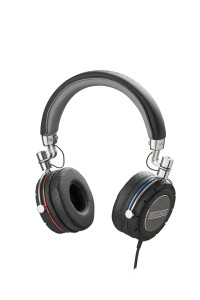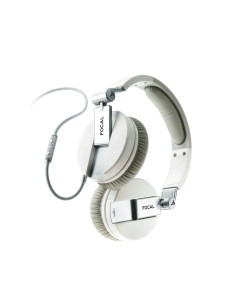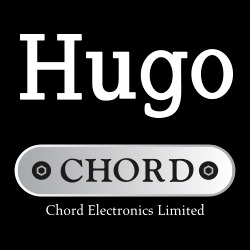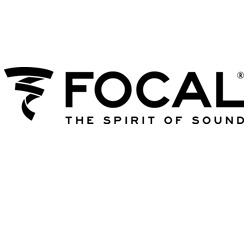After a decade’s worth of dominance, the “earbud” faces a long-overdue backlash
For hardcore music lovers, those fashionable, in-the-ear headphones supplied free with iPods, mobile phones and other portable devices are sorely lacking in most areas. They may look “cool” to a certain type of wearer, and none can deny they take up little space in one’s pocket or hand luggage, but the negatives are legion.
Hygiene? Even the most fastidious wearers have ear canals lined with a necessary excrescence. Nothing is as off-putting as witnessing a couple of iPod addicts swapping earbuds back and forth as they share a favourite track. I stopped asking them long ago if they do the same with their toothbrushes.
As for comfort, some people wisely do not want to stick anything in their ears. The most expensive earbuds on the market are those with custom-made cushions, shaped to match the wearer’s ear canal in the same manner that a dentist shapes a crown or dentures; custom fitting alleviates much of the discomfort. A supporting argument for this degree of tailoring is that many professionals – musicians, studio operatives, producers and the like – need the air-tight fit that such earbuds afford. Even so, for some the feeling is too uncomfortable or alien.
Sound quality is equally subjective, and there are “good” and “bad” earbuds, just as there are “good” and “bad” over-the-ear headphones. The single most popular over-the-ear headphone on the market, which I will not name for fear of legal action, has a reputation throughout the audio community as possessing some of the most unnatural sound imaginable, with nausea-inducing bass and more distortion than a politician’s lies. And yet every knuckle-dragging Beavis on the planet aspires to a pair, because they are fashionable with a capitol “F”. Go f-f-f-figure.
Better earbuds are part of the backlash, because those who crave portability are not about to forego the space-saving convenience of a couple of pea-sized speakers on the end of a hair-thin tether, small enough to coil into a plastic holder no bigger than a lady’s compact. Shure, Monster and Etymotic are among the brand leaders for in-the-ear headphones, these companies being the beneficiaries of Apple’s policy of supplying “free” some truly basic ‘buds with iPods and iPhones. The aftermarket makers laughing all the way to the bank, for few will balk at an extra £30 or £50 for a genuine improvement in sound quality.
What’s frightening – if you’re the sort who loses things like pens, cigarette lighters or car keys – is that the best of the earbuds from the above-named brands cost £200 and up. Some with custom-shaped cushions can nudge four figures. What they deliver for the extra money, though, is performance of a standard much closer to that of a serious audio system.
Among the latest to join the in-the-ear brigade is MartinLogan, hitherto known for gorgeous panel-type loudspeakers. This company’s first offering is the Mikros™ 70, which – like most high-end headphones and earbuds for use with Apple products – is fitted with Apple-approved in-line remote control and a microphone. To ensure compatibility with most listeners’ ear shapes, the Mikros™ 70 is supplied with a choice ear tips, to ensure a comfortable fit able to isolate “up to 97.8% of ambient noise,” while providing deep, extended bass. The Mikros™ 70 earbuds’ £149 tariff includes a carrying pouch, three sizes of bulb tips and two sizes of flange tips.
Winner of the 2012 European Imaging and Sound Association (EISA) award for Best Headphone is the superbly constructed Spirit One from Focal. An over-the-ear design, the Spirit One is produced by France’s largest manufacturer of high-end audio loudspeakers, and oozes luxury. Weighing only 225g, the Spirit One is constructed around a headband machined from aircraft grade aluminium – no cheesy plastics – and the cups contain drive units incorporating powerful neodymium magnets, with parts made from mylar and titanium.
Now available in white, as an alternative to the original’s silver-and-black, Spirit One Headphones cost £199, including interchangeable connecting cords with iPhone, IPad and iPod remote control, and a cord for those not wishing to use the remote facility. Also part of the set are a plug adapter, airplane connector, soft transport cover and a deluxe storage case.
Bowers & Wilkins, manufacturer of some of the UK’s finest speakers for over 40 years, were among the first to realise that the world could do with aftermarket headphone that improved on standard fare. Their stylish, beautifully-made on-the-ear P5 became an instant market leader, and was followed by the clever C5, which is the most comfortable of earbuds because the cable loops into the outer ear to keep it in place.
Just out is the folding P3, an on-the-ear design with superior sound, and pocket-sized dimensions, for £169. Available in black or white, it delivers most of the P5’s performance, but with less weight to burden the traveller.
Waiting in the wings are headphones from other “proper hi-fi” manufacturers including Musical Fidelity, Pro-Ject and even McIntosh, the venerable American amplifier maker with a 60-year-history. Along with other headphone specialists, including Grado, Audio-Technica and Sennheiser, they’re intent on raising the standard of sound issuing from your iPod, primarily with over-the-ear devices. But if you need another reason to embrace the return to conventional headphones, remember what any doctor will tell you: never stick anything in your ear that’s smaller than your elbow.
(Brummell, 2012)
























